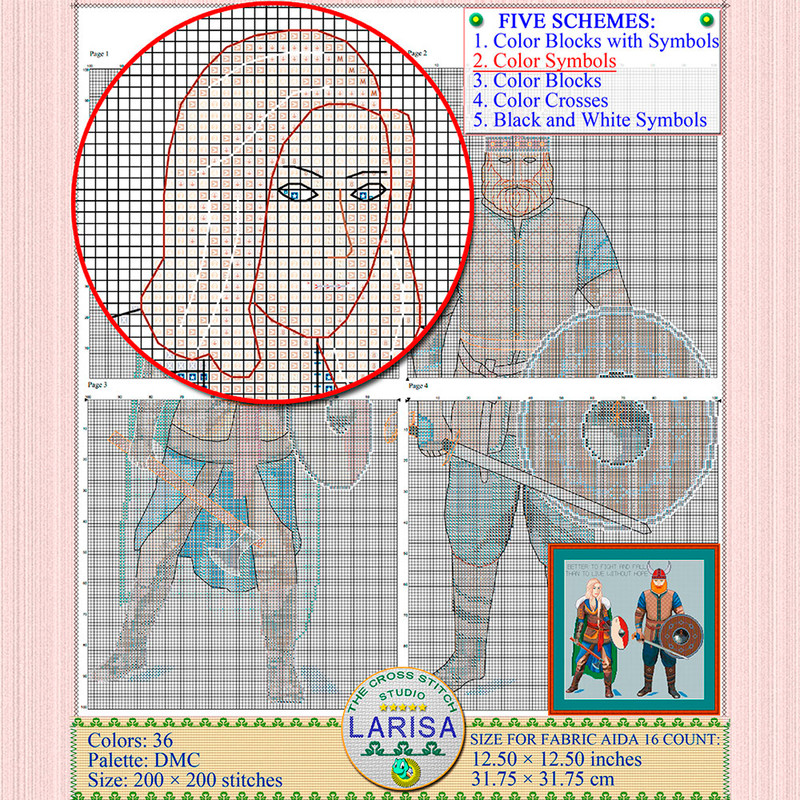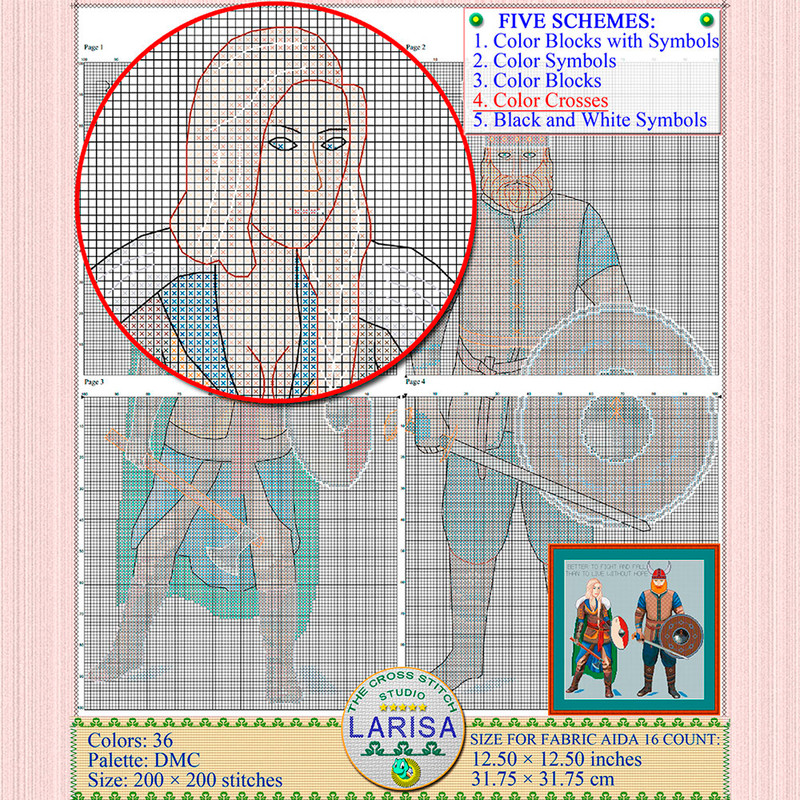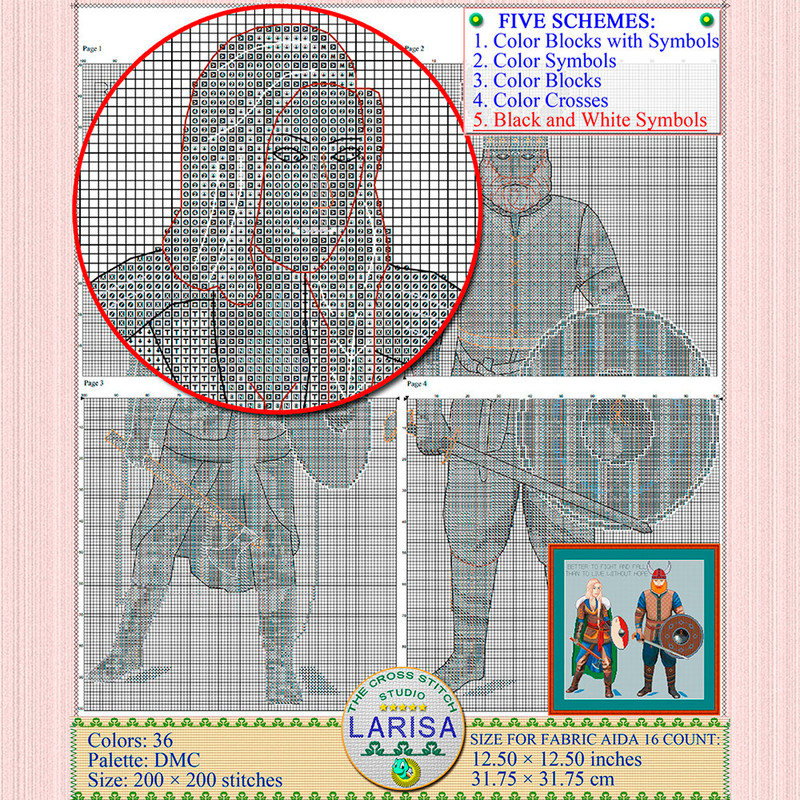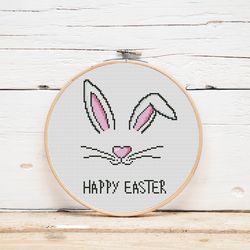Vikings Cross Stitch Pattern | Viking Warriors | Konung
Vikings cross stitch pattern
🔎 Vikings | Warriors | Konung: cross stitch pattern, printable PDF pattern, PDF pattern, printable cross stitch.
🔔 Only digital format. 🔎 The cross-stitch pattern comes in .PDF format.
✎ “Better to fight and fall than to live without hope.” (c) Volsunga, c.12
Yes, those who fall and get up are stronger than those who never fall at all. In the end, what will matter more, the result or the lessons learnt during the path?
★ Specification of this cross stitch pattern for different types of fabric.
• Fabric: Aida.
• Colors: 36. Palette: DMC.
• Size: 200 × 200 stitches.
• Finished size will vary depending on the count fabric/canvas you choose.
✔ 14 count ⇒ Size: 14.29 × 14.29 inches | 36.30 × 36.30 cm
✔ 16 count ⇒ Size: 12.50 × 12.50 inches | 31.75 × 31.75 cm
✔ 18 count ⇒ Size: 11.11 × 11.11 inches | 28.22 × 28.22 cm
💾 5 PDF includes:
1. FIVE SCHEMES (Fabric: 16 count Ice Blue Aida):
• Color Blocks with Symbols.
• Color Symbols.
• Color Blocks.
• Color Crosses.
• Black and White Symbols.
2. Color photo for reference.
3. List of DMC thread colors (instruction and key section).
🔔 Please note this is a digital pattern only! No fabric, floss, or other materials are included in the listing.
⛔ Returns & exchanges. This is a digital product and I don’t accept returns, exchanges, or cancellations.
❤ Feel free to contact me if you have any further questions.
❋❋❋❋❋❋❋❋❋❋
✎ Reference Information.
🔎 In Old English, the word wicing appears first in the Anglo-Saxon poem, Widsith, which probably dates from the 9th century. The word Viking was introduced into Modern English during the 18th-century Viking revival, at which point it acquired romanticised heroic overtones of “barbarian warrior” or noble savage.
🔎 The Vikings were known as Ascomanni (“ashmen”) by the Germans for the ash wood of their boats, Dubgail and Finngail ( “dark and fair foreigners”) by the Irish, Lochlannach (“lake person”) by the Gaels and Dene (Dane) by the Anglo-Saxons. The Slavs and the Byzantines also called them Varangians.
🔎 As war was the most prestigious activity in Viking Age Scandinavia, beautifully finished weapons were an important way for a warrior to display his wealth and status. A wealthy Viking would likely have a complete ensemble of a spear, a wooden shield, and either a battle axe or a sword. Battle axes were considered the “normal weapon” for middle class vikings. Swords were normally reserved for upper class and nobles.
🔎 Much poetry was associated with viking weapons. The richest might have a helmet and mail armour; these are thought to have been limited to the nobility and their professional warriors (retainers). Several layers of thick woollen clothing may have been used by poorer warriors. The average farmer was likely limited to a spear, shield, and perhaps a common axe or large knife (seax). Some would also bring their hunting bows (mostly long bow or flat bow) to use in the opening stages of battle.































